It’s a common problem in college towns where housing is in short supply: Students can make a tight market even tighter. This is the situation in Providence, home to Brown University, as well as the Rhode Island School of Design, among other institutions. In the last year alone, according to one survey, rent rose 6.9 percent in Providence, an increase surpassed by only one other U.S. city: Boston.
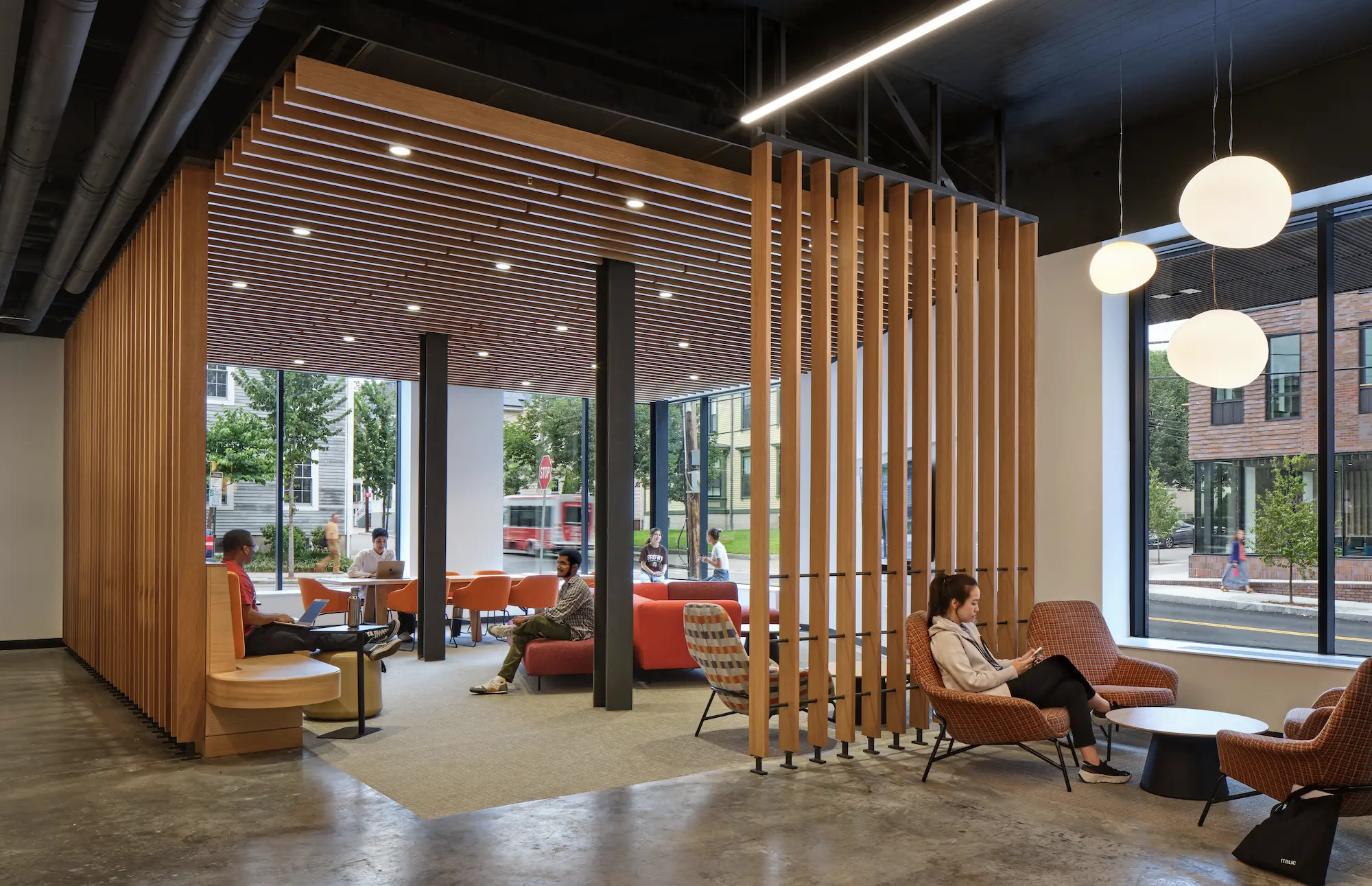
Ground-floor social spaces have generous windows looking out onto the street. Photo © Chris Cooper
A pair of new dorms designed by TenBerke (formerly Deborah Berke Partners) is part of Brown’s strategy to help alleviate this typical town-and-gown conundrum. Built across Brook Street from each other at the southeast corner of the school’s College Hill campus, the Chen Family and William and Amy Danoff Residence Halls—together known as the Brook Street Residence Halls—were conceived with upper classmen in mind, in particular seniors, who are not required to live in university housing. “The idea is to get them back on campus,” says Craig Barton, university architect at Brown. Toward that end, the buildings house roughly 350 students in apartment-like two-, three-, and four-bedroom suites, each with their own bath.
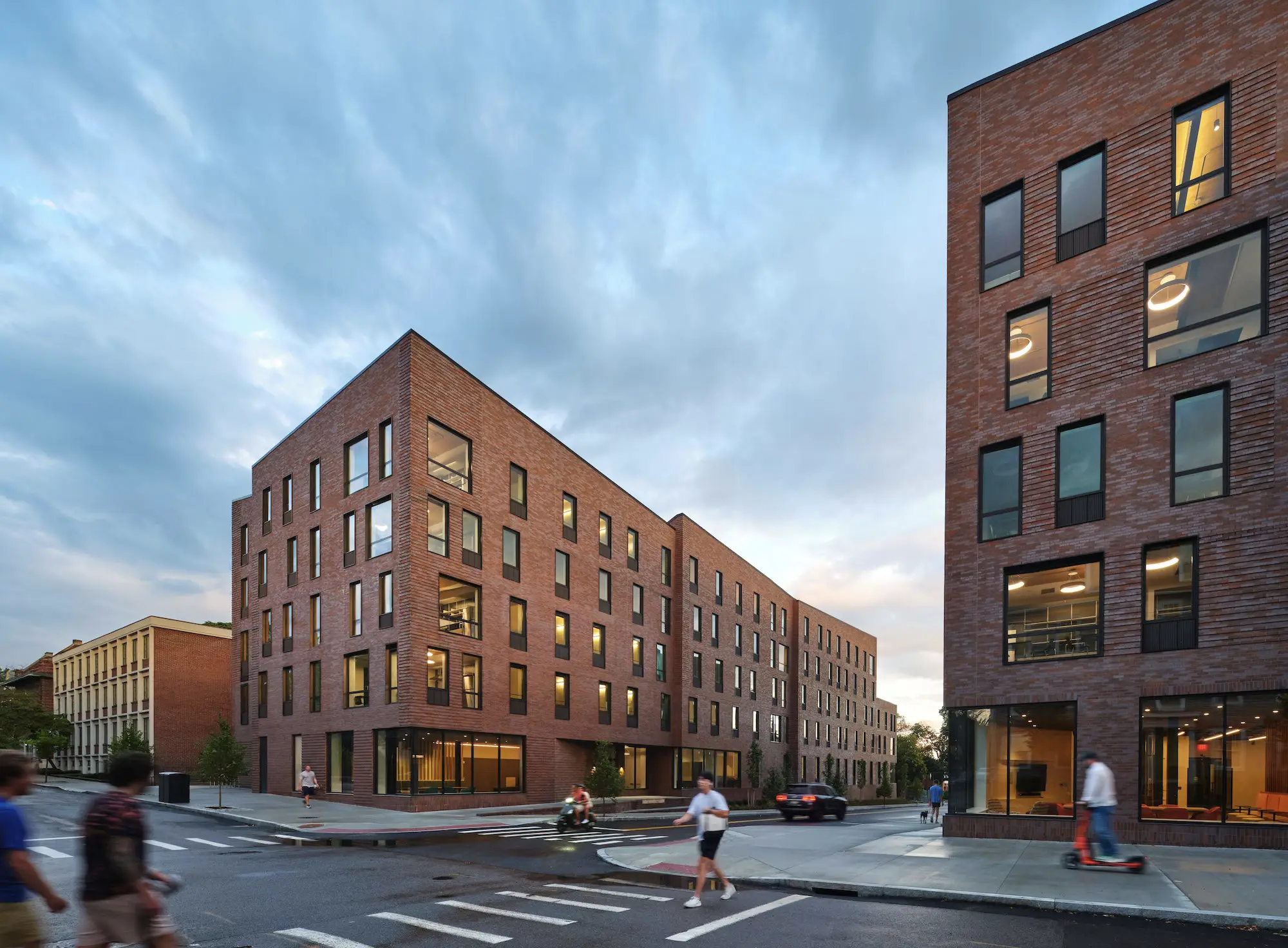
1
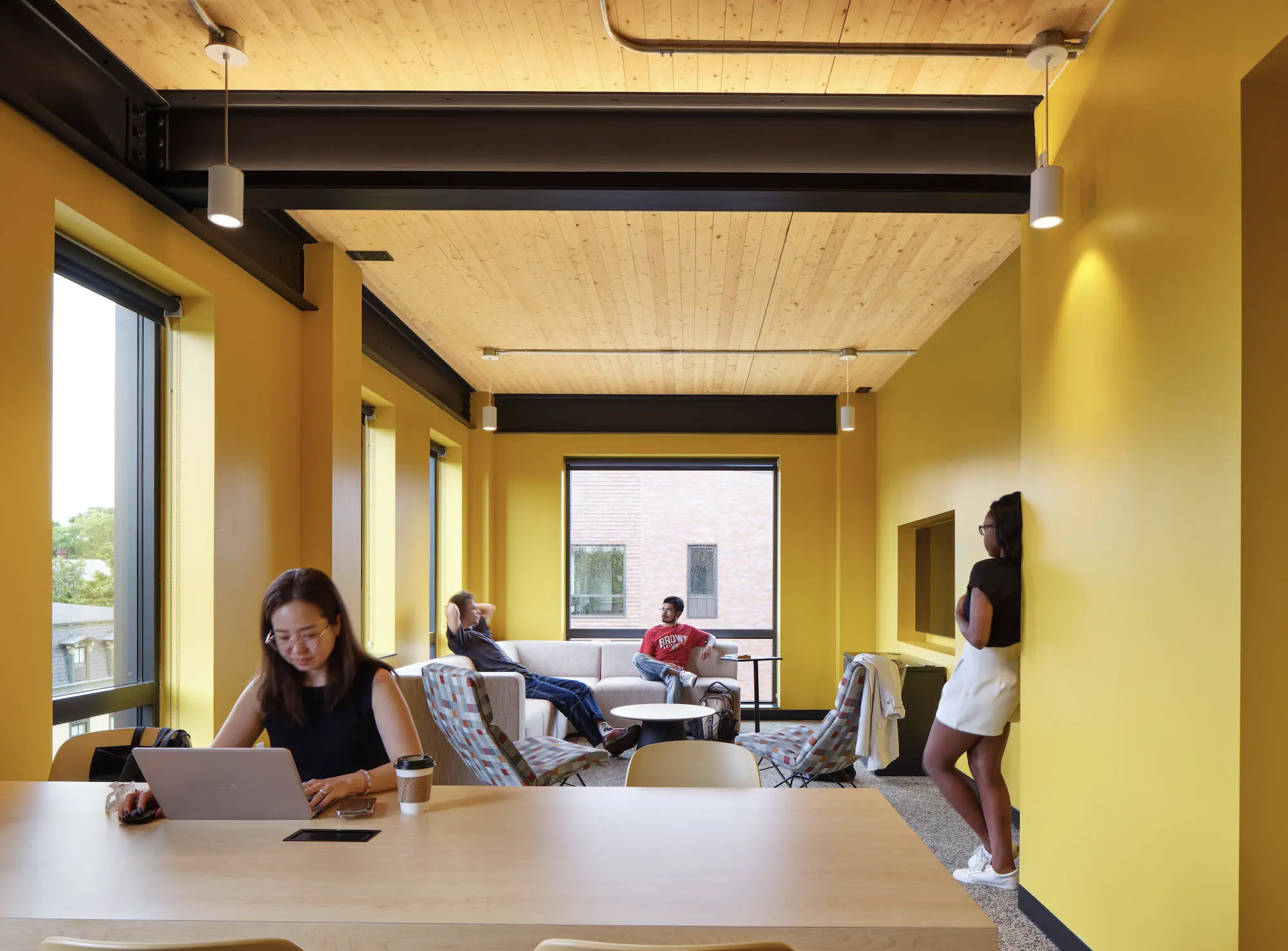
2
The pair of new residence halls sit at the southeast corner of campus, facing each other across Brooke Street (1); much of the hybrid mass-timber and steel structure is exposed throughout, lending the interior a loftlike feel (2). Photos © Chris Cooper
However, there is more to the new residence halls than merely expanding the on-campus housing inventory. The two brick-clad, mass-timber structures deftly negotiate a tricky urban context on sites that were most recently a strip small and parking lot where the university meets a residential district. More like fraternal twins than identical ones, the buildings, which in plan resemble a shallow U and L, are five stories tall at their highest point, stepping down to two stories at the south—the end closest to the lower-scale neighborhood.
TenBerke chose brick because “we wanted something that could span both the residential and the institutional character of the surroundings,” explains Noah Biklen, principal in charge. The architects used the material to create taut modernist skins, but with subtle articulation: small steps in plan and carefully placed corbelling create a play of light and shadow; the window openings, which incorporate terra-cotta spandrel panels, shift slightly from floor to floor, lending the main facades, which both span around 225 feet (nearly the whole length of the block) a quiet but syncopated rhythm.
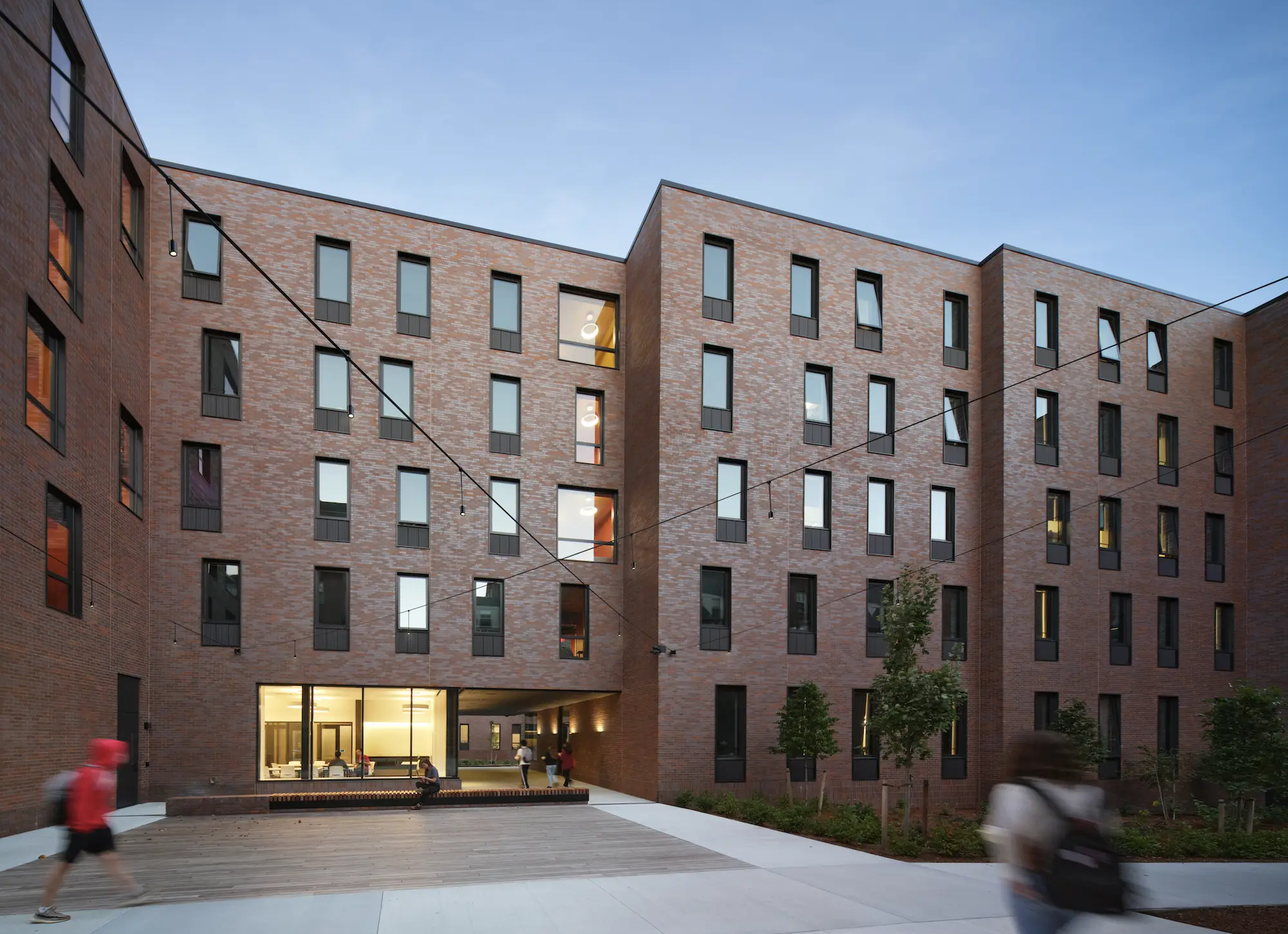
3
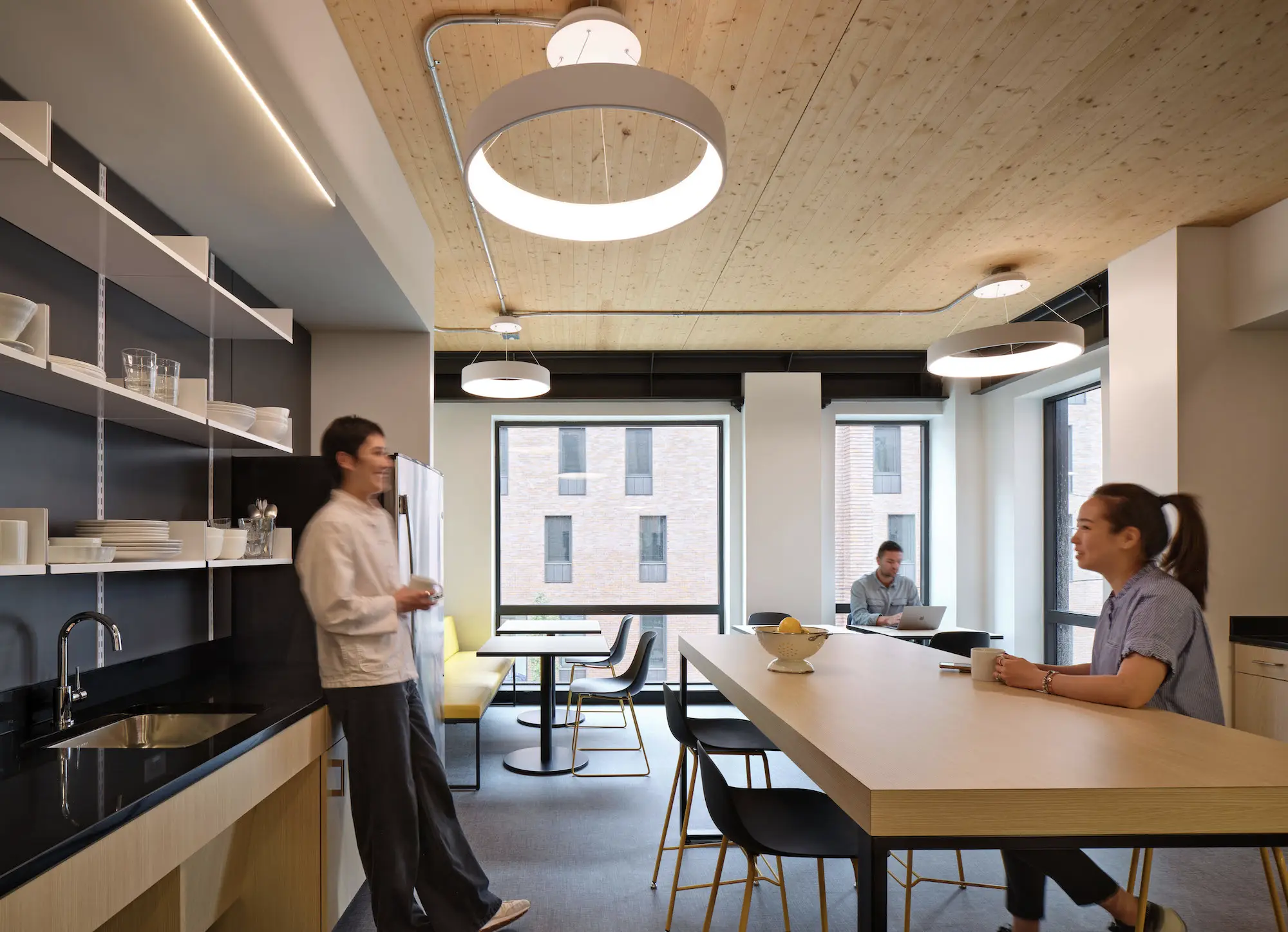
4
A midblock passage connects the new buildings to the rest of campus (3); communal kitchens are shared by clusters of about 16 residents (4). Photos © Chris Cooper
Inside, the buildings combine the features of independent apartment living with the social aspects of dorm life. Each floor has a variety of gathering and study spaces, including small nooks, and larger lounges, and communal kitchens (each shared by roughly 16 students). Many of these social spaces are located at corners, with generously sized windows, affording them views of the surroundings from multiple vantage points. Finishes throughout are practical and durable—including painted drywall, carpet tile, and vinyl flooring—with the cross-laminated timber (CLT) ceiling decks and their supporting steel columns and girders, all left largely exposed, giving the interiors a surprising loftlike feel.
The Brook Street Residence Halls are not the university’s first foray into mass timber. A William Rawn Associates–designed health-services center and dormitory, which also combined steel and CLT, was completed in 2021. Brown likes the approach, not only because of its lower carbon footprint, but because of its reliance on off-site fabrication, which reduces the disruption of the construction process to the surrounding community. It also saves time: Biklen estimates that the choice of a hybrid mass-timber frame shaved six weeks off the construction schedule compared to one with a more conventional structure.
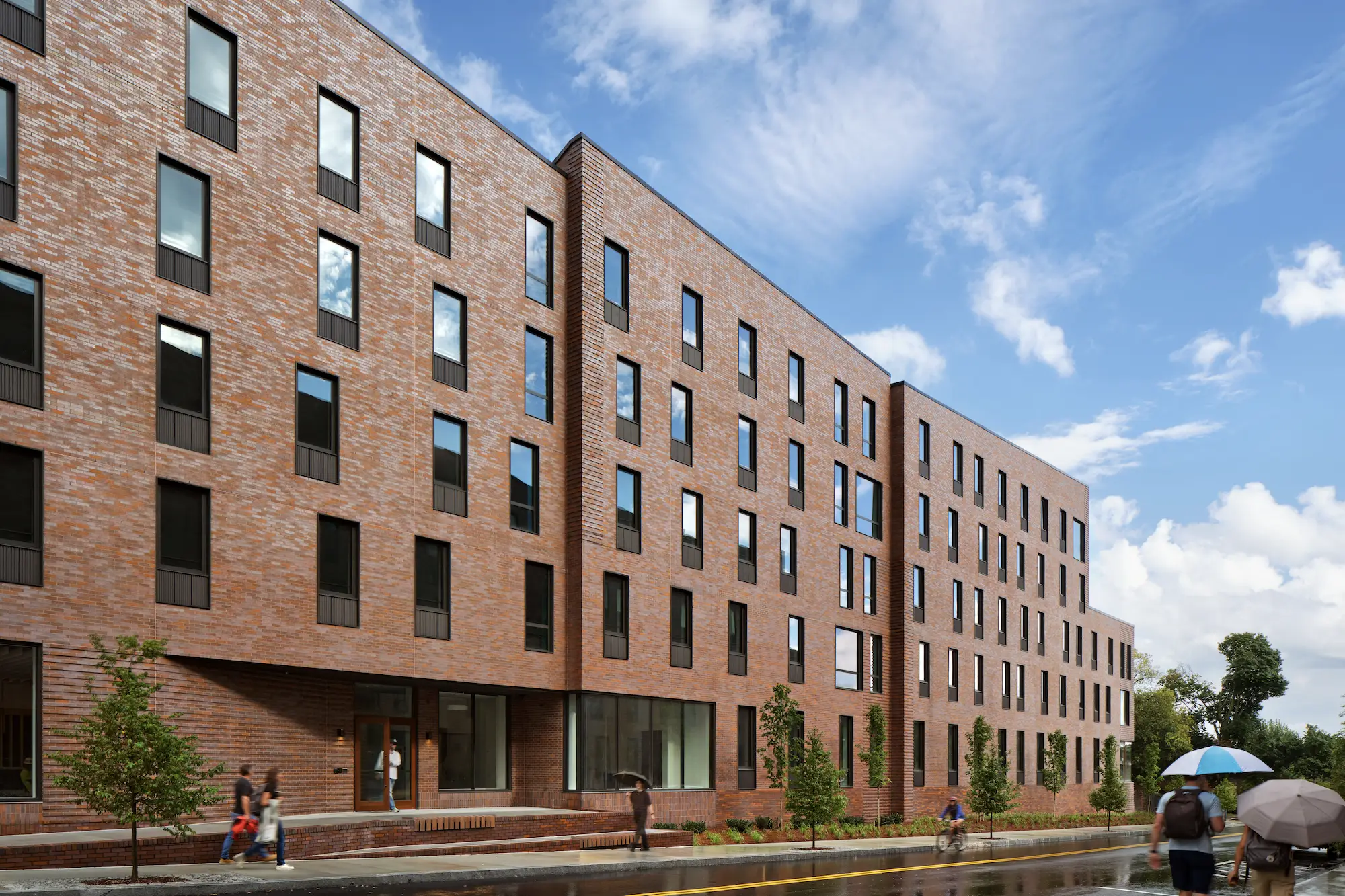
Slight steps in the facades and corbelling details help articulate the brick skin, while shifts in the fenestration create a syncopated rhythm. Photo © Chris Cooper
One sustainability measure is not as readily apparent as the exposed timber: the residence halls are all-electric. Along with a renewable power purchase agreement with a solar field in South County, Rhode Island, the elimination of combustion should help the university meet its commitment to net-zero greenhouse gas emissions by 2040. Biklen says that the most challenging part of the all-electric scheme was finding the space for the necessary infrastructure within the tightly programmed buildings. The project team worked hard to keep the surrounding public space, which includes an egg-shaped rain garden and bioswale at the southern end of the complex designed with landscape firm Stimson, free of transformers and other equipment.
This kind of attention to detail—from the careful consideration of outdoor space, to the sensitive manipulation of the facades and massing, and the intelligent treatment of materials and structure—make the new residence halls much more than additional beds. The Brook Street Residence Halls are a welcome addition to this corner of an expanding university and to on-campus life at Brown.
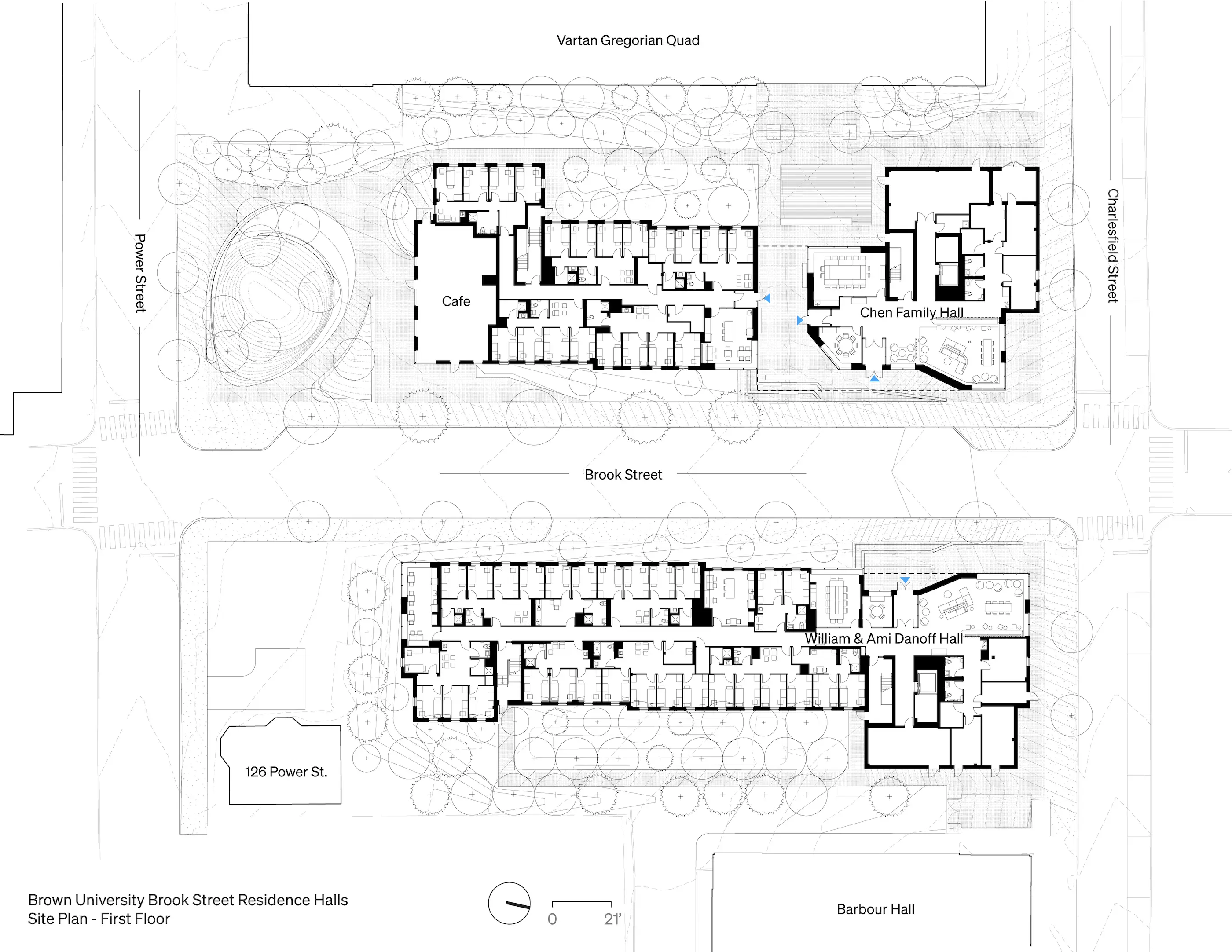
Site plan (click to enlarge). Image courtesy TenBerke





Post a comment to this article
Report Abusive Comment